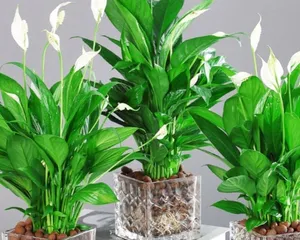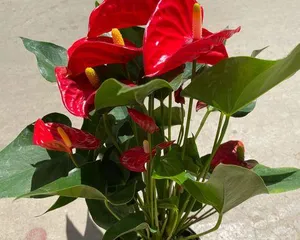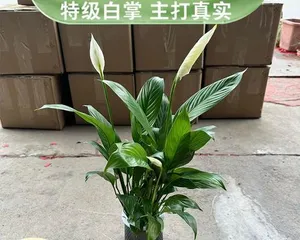Indoor potted plants are a decorative and recreational method that modern people are increasingly fond of, but many encounter problems in the process of caring for them, such as being unable to maintain a healthy growth state or even dying. How can we make our indoor potted plants grow "smoothly"? Next, let's explore the method of "hydroponic culture".

Principle of Hydroponic Culture
The principle of hydroponic culture is to use water instead of soil, allowing the plant to absorb the nutrients contained within it. This method is suitable for soilless plants and plants with a small root system, and it can reduce the occurrence of pests and diseases, making the plant healthier.
Selecting Plants Suitable for Hydroponic Culture
Before starting hydroponic culture, you need to select plants that are suitable for this method of care. For example, cacti, succulents, and Monstera deliciosa. These plants have strong vitality and strong adaptability.

Tools Needed for Hydroponic Culture
The tools needed for hydroponic culture mainly include transparent glassware, cement pots, glass balls, stones, water, etc. These tools can be selected according to the needs of different plants.
Preparing the Substrate for Hydroponic Culture
Before starting hydroponic culture, it is necessary to prepare a suitable substrate for the plant's growth. Depending on the needs of different plants, different types of substrates can be chosen, such as river sand, coral sand, leaf mold, and calcareous rock.
Transplanting the Plant into Water
After preparing the substrate, gently transplant the plant into the water, ensuring the plant's roots are completely submerged. Be careful not to let the plant's leaves and stems touch the water surface, as this can easily cause rot.

Adding an Appropriate Amount of Nutrient Solution
After transplanting, you can add an appropriate amount of nutrient solution to meet the nutritional elements required for plant growth. However, note that the concentration of the nutrient solution cannot be too high, otherwise it will damage the plant's roots.
Regularly Changing the Water
Since the main source of nutrient absorption for plants in hydroponic culture is water, it is necessary to change the water regularly. In general, changing the water once a month is sufficient.
Controlling the Water Temperature
The water temperature in hydroponic culture also needs attention. Generally, the water temperature should be kept between 20-28°C, avoiding temperatures that are too low or too high, which can affect plant growth.
Controlling Light and Ventilation
Although hydroponic culture can reduce the occurrence of pests and diseases, light and ventilation still need attention. A moderate amount of sunlight can promote photosynthesis and enhance the plant's vitality.
Avoiding Over-Fertilization
When practicing hydroponic culture, avoid over-fertilizing. Since the nutrient solution is already rich in nutrients, over-fertilizing will lead to an excess of nutrients in the plant, thus affecting its growth.
Preventing and Controlling Pests and Diseases
Although hydroponic culture can reduce the occurrence of pests and diseases, prevention and control are still necessary. Regularly check the plant's growth status and take timely measures if problems are found.
Maintaining Suitable Humidity
Since the plant's roots are directly submerged in water in hydroponic culture, it can easily lead to excessively high air humidity. It is necessary to maintain suitable humidity; you can place some green plants around to absorb excess moisture.
Pruning the Plant Appropriately
When practicing hydroponic culture, it is necessary to prune the plant appropriately to maintain its shape and growth status. However, be careful not to over-prune, as this will affect the plant's growth.
Regularly Cleaning the Container
When practicing hydroponic culture, it is easy for some debris and algae to form. Therefore, it is necessary to regularly clean the debris inside the container to keep the water clean.
The above is a discussion on "Smooth Sailing: The Secret of Hydroponic Culture". By selecting plants suitable for hydroponic culture, preparing a suitable substrate for growth, adding an appropriate amount of nutrient solution, and regularly changing the water, we can make our indoor potted plants grow "smoothly". However, before starting hydroponic culture, it is still necessary to master the relevant skills and knowledge to achieve good results.